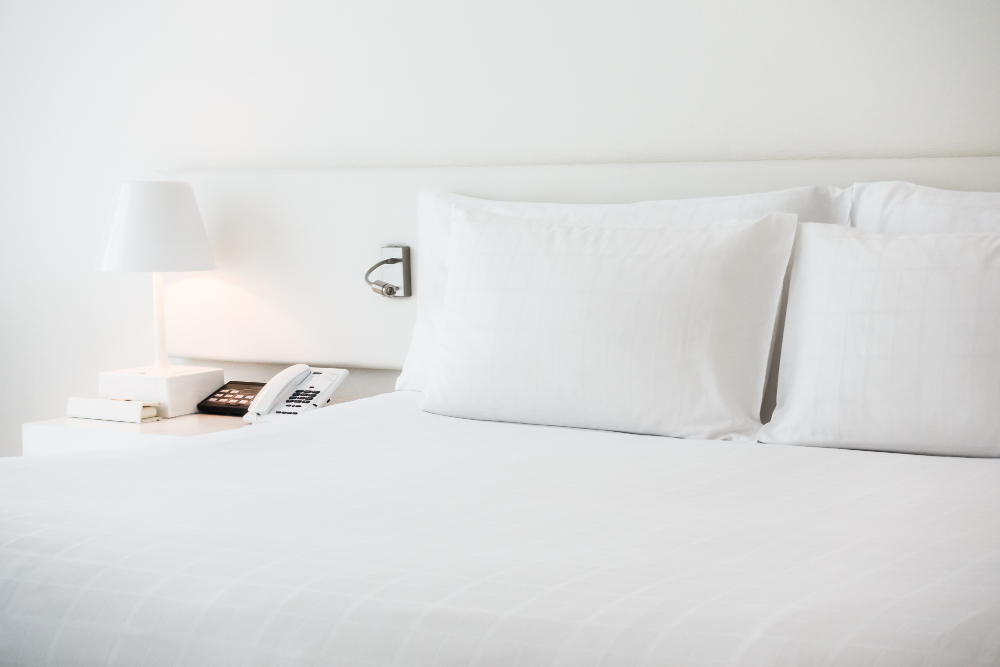A good night’s rest shapes how we feel, move, and think each day. The bed we choose changes that rest more than most people notice. A memory foam mattress moulds to the sleeper’s body and hugs every curve. This shape-holding action eases strain and lets muscles release their grip. Over time, experts have sharpened the design to blend gentle softness with strong support.
Some of the most thoughtful builds appear in premium ranges such as the Origin mattress and other advanced models. Learning what gives them this comfort shows why many people call memory foam the best path to deep, calm rest. A closer look at how it feels, lasts, and adapts reveals why it remains a favourite in many homes.
The Science Behind Memory Foam
Memory foam began as a material built to soak up impact. In bedding, it shapes itself to body weight and heat. It softens where pressure builds and holds steady where support matters. The foam’s tiny cells shift and slide to match each contour. Once the sleeper rises, the foam springs back to its first form.
This responsive nature spreads body weight evenly. It eases tight spots, so the sleeper rolls and turns less. Many people wake feeling lighter with straighter backs and less stiffness.
How does it adapt to the Sleeper?
Springs push back with the same force everywhere. Memory foam listens to the body instead. Heavier parts sink lower, lighter parts rest higher. This keeps the spine, hips, and shoulders in line.
The foam swallows motion. If one person turns or stands up, the other stays still. In shared beds, this stillness makes sleep more peaceful. This ability to isolate movement becomes even more valuable for light sleepers who notice even small shifts.
Layers That Work Together
A memory foam mattress works in layers. The top layer greets the body and cradles it. Middle layers guide the weight toward the base. The base holds the frame and stops sagging.
Some makers add cooling gels or airy designs to move air through the foam. These keep the surface steady in temperature all night. When balanced, the layers blend softness, bounce, and lasting strength. The way these layers interact decides how well the mattress supports and comforts over the years of use.
Why Comfort Feels Different on Memory Foam?
Comfort comes from a bed that matches the sleeper’s shape. Memory foam cups the body, letting muscles loosen. This makes the surface feel gentle while staying firm in needed spots.
The foam fills spaces under the body so the spine stays straight. This steady alignment protects the body from strain through the night.
Pressure Relief and Circulation
One of memory foam’s biggest gifts is pressure relief. It wraps around joints and curves, lifting stress off hips and shoulders. This helps blood move freely so muscles heal as we sleep.
Better blood flow also keeps body heat balanced. Without sore points, the body controls its warmth more easily, making sleep deeper. Over many nights, this balance can improve how rested and energised you feel in the morning.
Durability and Longevity
A strong memory foam mattress holds its shape for years. The dense foam bends under weight and springs back without warping. This strength keeps the bed feeling the same each night.
To keep it in good form, rotate it now and then and rest it on a solid base. Care helps it serve well for a long time.
Cooling Features for Better Rest
Older foams often trap heat. Newer ones solve that with features like:
- Gel foam that soaks up and releases warmth
- Breathable covers that let air pass through
- Vent holes that guide airflow inside the mattress
Together, these keep sleepers cooler. This makes memory foam fit even for warm weather nights.
Motion Isolation for Peaceful Sleep
Memory foam stops movement from spreading. The foam bends only where weight presses down. This means turning, shifting, or leaving the bed disturbs no one else.
Couples value this stillness because it lets each person sleep without interruption from the other. For people who wake easily, this can make the difference between broken rest and a full night’s sleep.
Support for Different Sleeping Positions
Memory foam fits many sleep styles. Side sleepers sink gently at the shoulders and hips. Back sleepers lie flat with even support. Stomach sleepers stay lifted in the middle without dipping too far.
The key is firmness. Too soft, and the body droops. Too firm and joints ache. The right firmness keeps the spine straight while feeling gentle.
Comparing Memory Foam to Other Mattress Types
Every mattress type offers its feel. The table below shows how memory foam, springs, and hybrids differ.
| Feature | Memory Foam | Innerspring | Hybrid |
| Contouring | High | Low | Medium |
| Motion Isolation | Excellent | Low | Medium |
| Pressure Relief | Excellent | Medium | High |
| Durability | High | Medium | High |
| Cooling Technology | Found in modern designs | Good airflow by design | Blend of airflow and foam |
This makes it easier to match the right type to the right sleeper.
The Role of Certifications and Materials
Good memory foam uses safe, tested materials. Certifications prove the foam meets health and quality standards. They also show it holds no harmful stuff.
When checking options like the Origin mattress, look at the foam’s thickness, layer build, and air flow design. These decide how it feels and how long it lasts.
Care and Maintenance Tips
Care keeps a memory foam mattress strong. Turn it a few times each year so it wears evenly. Use a cover to block dirt and spills.
Lay it flat on a solid frame to keep the foam steady. Avoid folding or bending it, which can harm its shape.
Choosing the Best Option
The top rated memory foam mattress in Singapore suits the sleeper’s comfort needs and body type. Picking the right one means checking a few things.
Three points to guide choice:
- Foam strength and density for lasting support
- Layer mix for comfort and steady hold
- Cooling features to keep the temperature steady
These checks help find the one that feels right for years.
Memory Foam in the Modern Bedroom
Memory foam now appears in pillows, toppers, and cushions as well as beds. Its shape-holding and shock-absorbing traits make it useful anywhere comfort matters.
In the bedroom, it creates a space where the body rests deeply and the mind settles. This is why it remains a trusted choice for many households.
Final Thoughts
A memory foam mattress offers more than a soft place to sleep. It shapes itself to the body, holds the spine, and stills movement. Makers like the Origin mattress show how thoughtful design lifts these benefits higher. For those searching for the top rated memory foam mattress in Singapore, knowing these secrets makes the choice easier.
FAQ’s
1. What is a memory foam mattress?
A memory foam mattress is made from special foam that shapes itself to your body when you lie down,
2. Is memory foam good for all sleeping positions?
Yes. Whether you sleep on your back, side, or stomach, memory foam can adapt to your shape and keep you supported.
3. How do I know if it’s the right mattress for me?
Try lying on one for at least 10–15 minutes in the store. If you feel supported and relaxed, it could be the right fit.
4. How does memory foam work?
It reacts to your body heat and weight, gently sinking where you press and holding your shape for comfort.



